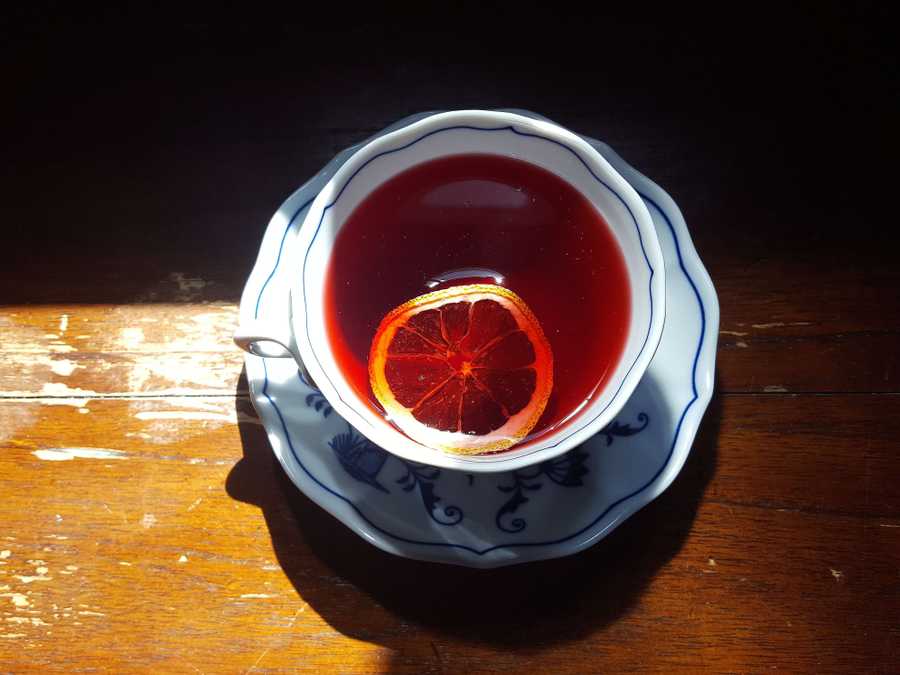Using Hibiscus to Treat High Blood Pressure
by Amylee Amos PhD, RDN, IFMCPNutrition
My husband and I always joke that our pantry is a natural pharmacy. In our pantry we have nearly 100 different dried spices, herbs, and flowers that we use in our cooking. I’ll admit that my husband is really the one who knows how to use them all. But even still, Bashar and Amylee’s pharmacy is a running family joke. But the thing is, it seriously is a pharmacy- and it’s a pharmacy that consists of medicine that comes without a horrible host of side effects. Spices and herbs can and should be used on a regular basis to help us stay well and prevent chronic disease, but they can also be used therapeutically as specific treatment interventions. One such wonder flower that can be used to target high blood pressure is hibiscus.
What is Hibiscus?
Hibiscus, originally native to India, is a large beautiful flower whose culinary uses have been documented for centuries. However most commonly, the calyx of the plant have been dried and boiled in water to create a deep red, sour tonic. The red color comes from an abundance of anthocyanins, red pigmented phytonutrients, which provide tremendous health benefits (1). It’s a delicious beverage served plain and warm or over ice with a splash of sparkling water. Many grocery stores sell loose dried hibiscus leaves, which can be boiled directly in water. But to make things even easier, many more conventional grocery stores have hibiscus tea bags, which can be simply added to hot water. Hibiscus tea is naturally caffeine free.
The Benefits of Hibiscus:
Hibiscus has a number of incredible benefits, but perhaps the most inspiring is the use of hibiscus in the treatment of hypertension. Hypertension, or high blood pressure, can often occur without warning signs and can seriously damage the heart and other organs if left untreated. From a cognitive health standpoint, research shows that individuals with Alzheimer’s disease often have high blood pressure for decades before the onset of their cognitive symptoms. High blood pressure has also been related to the pathological manifestations of Alzheimer's such as beta amyloid plaques and tau tangles (2).
Using hibiscus as a treatment modality for lowering blood pressure has been fairly well studied. When compared to drinking regular tea, research shows that hibiscus tea lowered systolic blood pressure (SBP) by 11.2% and diastolic blood pressure (DBP) by 10.8%, while regular tea drinkers only had a 4% decrease is SBP and and a 3.6% decrease in DBP. And even more impressively, this significant decrease in blood pressure from hibiscus occurred after only twelve days of drinking tea! (3).
What’s even more impressive is that hibiscus has been studied head to head with one of the most common pharmaceutical interventions for the treatment of hypertension, Captopril, an ACE inhibitor. In this study, individuals were either given daily hibiscus tea or 25 mg of Captopril twice per day. The results showed that the hibiscus tea and the Captopril had no significant difference in hypotensive effects, meaning that both the standard pharmaceutical and the hibiscus tea worked equally well in lowering the participants’ blood pressure! (4).
Now this is what I’m talking about when I say a natural pharmacy!
What’s the Takeaway?
Brew yourself a nice cup of hibiscus! The fact that hibiscus is just as effective as an ACE inhibitor in lowering blood pressure is staggering. Considering the prevalence of high blood pressure and the health conditions associated with hypertension, we should all be utilizing the benefits of hibiscus. And the truth is, the benefits of this incredible flower extend far beyond their hypotensive effect. Other benefits of hibiscus include the treatment of dyslipidemia, anti-cancer effects, and treatment inflammatory diseases of the liver and kidney (1).
It’s important to look at your whole health picture to determine how much hibiscus you should be drinking per day and what other natural treatment modalities you should be using. Contact us at the Amos Institute to learn more and to work one on one with a registered dietitian!
References:
- Riaz, G. & Chopra, R. (2018). A review of phytochemistry and therapeutic uses of Hibiscus sabdariffa L. Biomedicine and Pharmacotherapy, 102: 575-586.
- Skoog, I. & Gustafson, D. (2006). Update of hypertension and Alzheimer’s disease. Neurological Research, 28(6): 605-611
- Haji Faraji, M. & Haji Tarkhani, A.H. (1999). The effect of sour tea (Hibiscus sabdariffa) on essential hypertension. Journal of Ethnopharmacology, 65: 231-236.
- Herrera-Arellano, A., Flores-Romero, S., Chavez-Soto, M.A., Tortoriello, J. (2004). Effectiveness and tolerability of a standardized extract from Hibiscus sabdariffa in patients with mild to moderate hypertension: a controlled and randomized clinical trial. Phytomedicine, 11(5): 375-382.